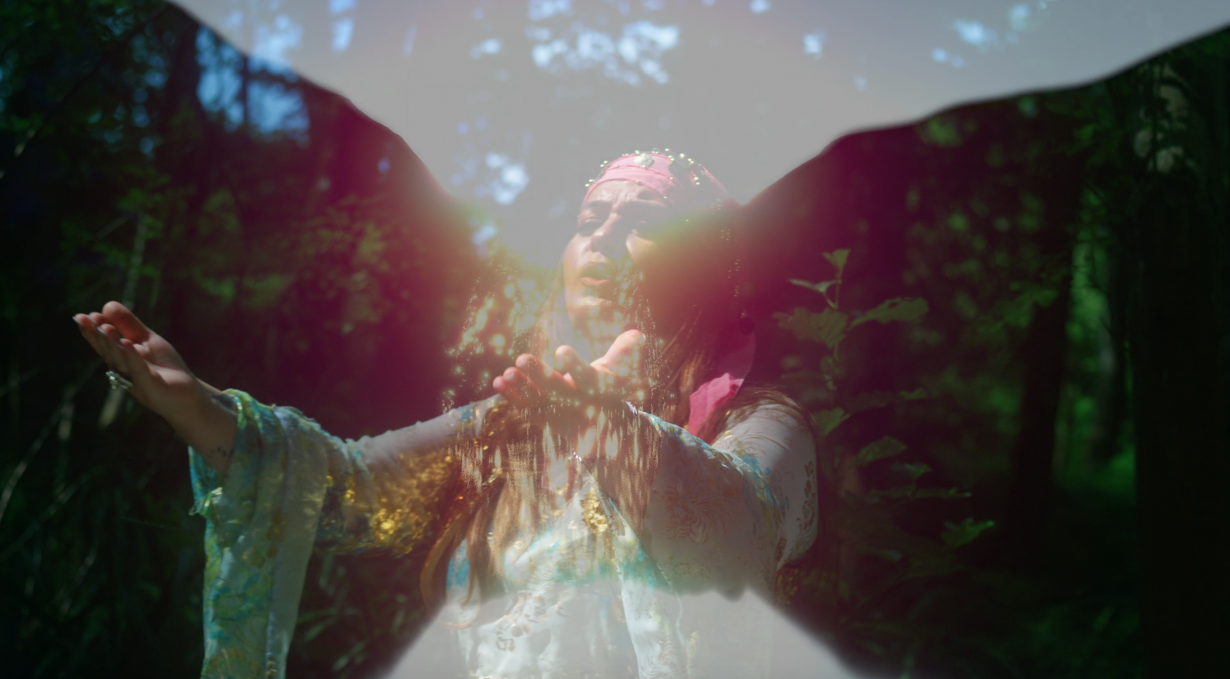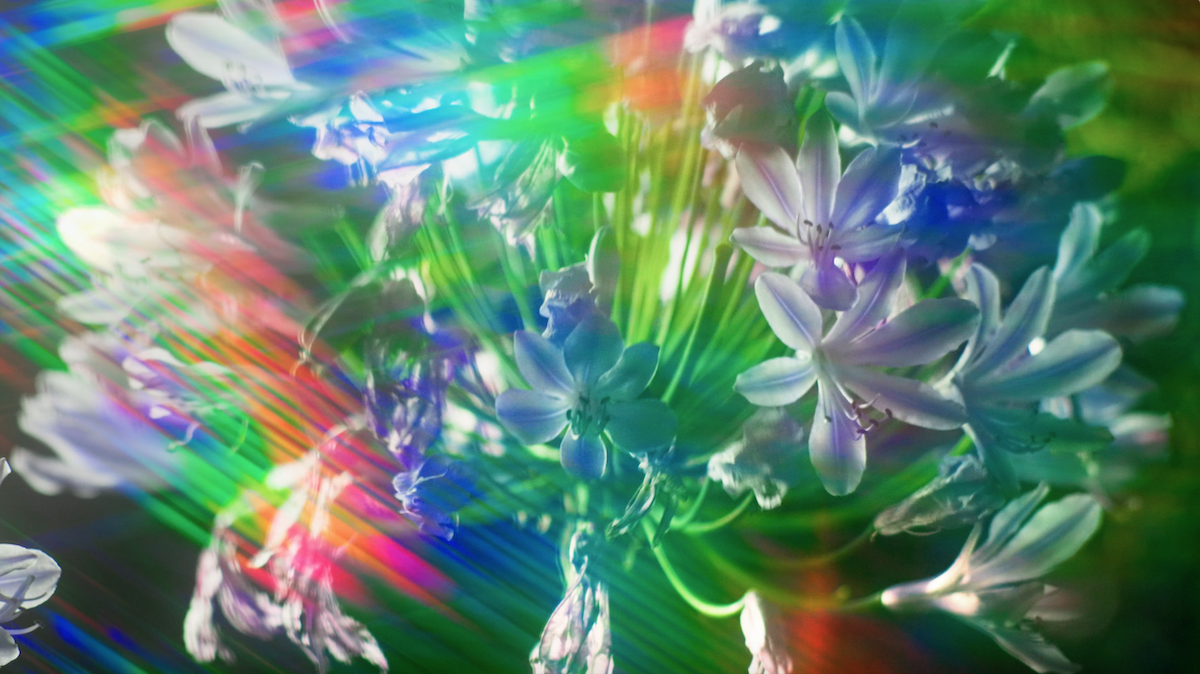The Kurdish-British artist’s new video is a bittersweet ode to the preservation and reimagining of Kurdish identities
Cry Me a Waterfall (2021) by the Kurdish-British artist Jala Wahid, is a Kurdish music video exploring long-distance connections to the contested Kurdish region in the Middle East, fictional concepts of homeland and notions of identity when living as a part of a global diaspora. Kurdistan is a disputed land, its formal creation having been either opposed or denied, resulting in the Kurdish ethnic group being stateless and subject to systematic suppression.
Cry Me a Waterfall is an epic love story between a lover and ‘their’ waterfall. It features two songs, performed by singer Amal Saeed Kurda, set against two landscapes: a lush forest bathed in brilliant sunlight and a dreamy CGI waterfall based on Bekhal waterfall, offering a reimagining of Kurdistan. The songs are love ballads; Divine Kiss is a Kurdish love song and Cry Me a Waterfall is a new composition written by Wahid in English.

The film starts with Kurda singing Divine Kiss as she wanders through the forest. At the songs end, the vibrant greenery changes to a digitised, glittering waterfall under a night sky, as if suddenly evoked from the lingering music. Kurda begins to sing again with more passion, the sense of desperate longing to be one with the fictional landscape growing. Both scenes begin to merge and anticipation of a union between lover and waterfall builds until the sun rises to meet the water, a metaphorical succumbing to imagination. Kurda is plunged into the vital cascade singing of her salvation and communion from within it. Attaining the climax, she beams with light so bright it disperses into rainbows.
It’s a seductive, sensual and spiritual experience which should leave you satisfied, but it doesn’t. The desperation of embodying a homeland is undeniable, tangible and real for Kurda, who becomes Wahid’s emotional avatar, but the imagined visuals underly the union of land and person with a sense of incompleteness that is bittersweet. Bringing about spiritual union are aspects of Kurdishness: language, music, history and politics, all traits carried through into the diasporic life. Each facet arouses the other, generating a fluid identity that exists outside geographical boundaries. Sculptural CGI flowers open and close, visualising how the act of reuniting with an identity is like a sculptural memory being reinvigorated through song, language and poetry. Transferring the Kurdish poem and song tradition into English, Wahid bridges her dual cultural experiences.

Against a backdrop of cultural suppression and assimilation through diasporic movement, oral transmission becomes a method of cultural preservation. With the Kurdish love song sung first, our unfamiliarity with the language emphasises the emotional effect of the songs. Combined with the visuals and immersive music this makes an interesting entry into the film, submitting the viewer to the power of intense feeling, mirroring perhaps how Kurda is given over to the need to both conquer and be one with the waterfall. At times Cry Me a Waterfall feels packed with ideas, but that is easily forgiven for its sublime imagery, sweeping drama and challenge to static identities.
Jala Wahid: Cry Me a Waterfall is at Two Queens, Leicester until 28 August
This article is part of Remark, a new platform for art writing in the East Midlands by ArtReview in collaboration with BACKLIT. Read more here and sign up for the Remark newsletter here
